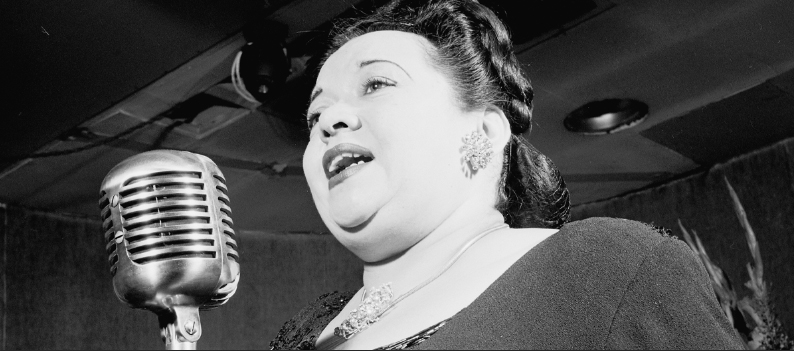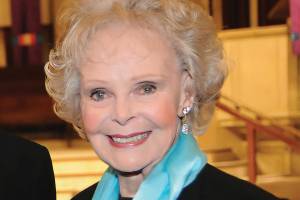By JACK McNEEL
The mid-30s through the mid-40s marked the period when jazz dominated the music world, with the likes of bandleaders Count Basie, Louis Armstrong, Tommy Dorsey, and Duke Ellington selling out clubs throughout New York City all the way over to venues scattered throughout the Left Coast.
And let’s not forget the female vocalists fronting many of those big bands—big names like Billie Holiday, Ella Fitzgerald, and Martha Raye.
When people talk about the Jazz Swing Era, the state of Idaho most likely does not come to mind. Funny thing is a songbird known as “The Queen of Swing” was actually a Native American who grew up on the Coeur d’Alene Reservation, near De Smet in the Northern Panhandle.
Few Idaho residents recall her name, and most likely never even heard of her at all. Mildred Bailey was actually the first female to sing with a big band, the Paul Whiteman Band, back in the early 1930s. She preceded the likes of Ella Fitzgerald and Billie Holiday.
I first remember learning of Bailey in 2012. It was during a Christmas Party held at the Coeur d’Alene Tribal Casino with Idaho Governor Otter and several Idaho House and Senate members in attendance. A young college student and Nez Perce tribal member, Julie Keefe, educated us about the legendary songstress, entertaining us with several of Bailey’s songs.
It was a day few of us would forget.
Keefe has been spreading the Bailey gospel through performances around the country. She’s been determined to gain Bailey the credit she deserves by getting her inducted into the Jazz Hall of Fame.
As a result of Keefe’s 2012 performance that I attended at the casino, the legislators who had been present introduced a resolution the following spring, honoring Mildred Bailey.
Resolution #49 read, “A jazz pioneer who blazed a trail that hundreds of other women have now traveled and we will never forget her contributions to the American jazz and blues musical idiom.”
Keefe had begun her pursuit of gaining recognition for Mildred in 2009 when she flew to Washington D.C. to perform Bailey’s music at the National Museum of the American Indian. Audiences were receptive.
A year later, she flew to New York and went to the Jazz Hall of Fame at Lincoln Center. Keefe was alarmed to find only four women recognized there—Billie Holiday, Bessie Smith, Ella Fitzgerald, and Mary Lou Williams.
According to Keefe, it was a great injustice not to have Bailey recognized among women the song legend had preceded and inspired. Bailey had essentially pushed the door open for these four women and many more to come in the future.
Although most people don’t recall her name, the songs Bailey made famous still ring true—like “Rockin’Chair,” “All of Me,” “Thanks for the Memories,” and more.
One name everyone remembers is Bing Crosby. Few people know that much of his early success was due to his friendship with Bailey.
For a period, Crosby was living in Spokane, Wash. Bailey had been living there at the time as well. He came to know Bailey and her brothers, who were musicians in their own right, playing piano and sax. Her brothers eventually joined forces with Crosby, who played drums at the time, to form a unit called the Musicaladers.
Meanwhile, Bailey moved to Los Angeles, Calif., to pursue her music career. She encouraged Crosby and her brothers to join her. They did, staying with her until they could afford an apartment of their own.
Partially due to her connections and help, the Musicaladers launched full on into the California music industry, and Bing Crosby’s history from that point forward is well known.
“I was so lucky in knowing the great jazz and blues singer, Mildred Bailey, so early in life,” Crosby once said. “I learned a lot from her. She made records, which are still vocal classics, and she taught me much about singing and interpreting popular songs.”
Crosby and Bailey’s brother Al introduced her to bandleader Paul Whiteman, who fronted what was likely the most popular orchestra of the day. Whiteman put Mildred Bailey under contract to sing with his orchestra, which she did through the fall of 1932.
This was all in the early stages of the Swing Era, about the time that such names as Ella Fitzgerald and Billie Holliday started popping up.
In 1944, Time Magazine ran a review of her show in New York saying, “she is just about the greatest songbird in the U.S.” The term ‘great’ is often overused, but, for Mildred Bailey, no other word does her justice.
After her four-year gig with the Paul Whiteman band, she went on to record with such well-known artists as the Dorsey Brothers and Benny Goodman. She also sang on radio with the likes of George Jesse and later sang at New York clubs.
In 1944 CBS gave her a show of her own, which ended in 1945.
It was just six years later that she died of heart failure in a New York hospital.
In 1994 the U.S. Postal Service issued a stamp in Bailey’s honor, further indicating her prominence in the musical world over many years.
Keefe still continues her efforts to have Bailey’s name listed in the nation’s Jazz Hall of Fame at the Lincoln Center of the Performing Arts.
The name Mildred Bailey deserves recognition nationally and, perhaps even more so, throughout her own home state. MSN








